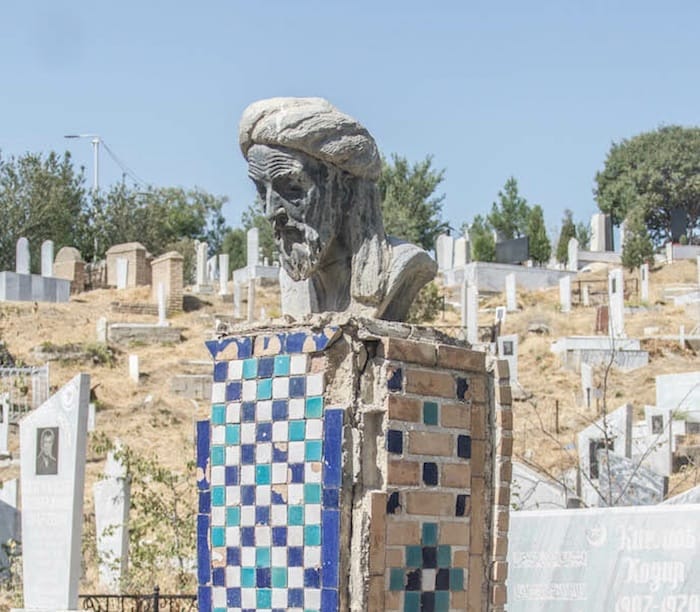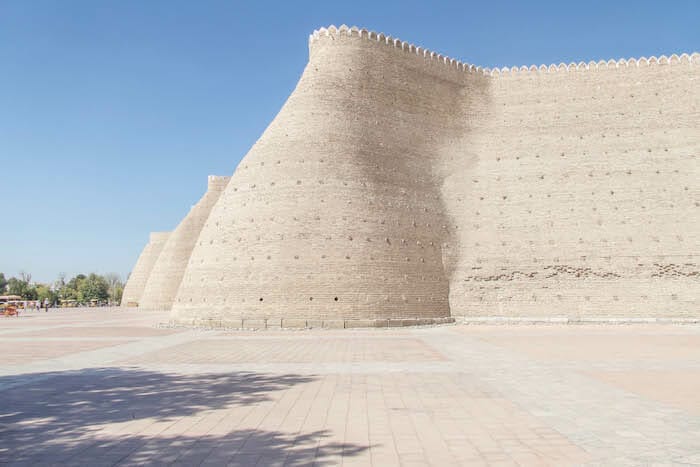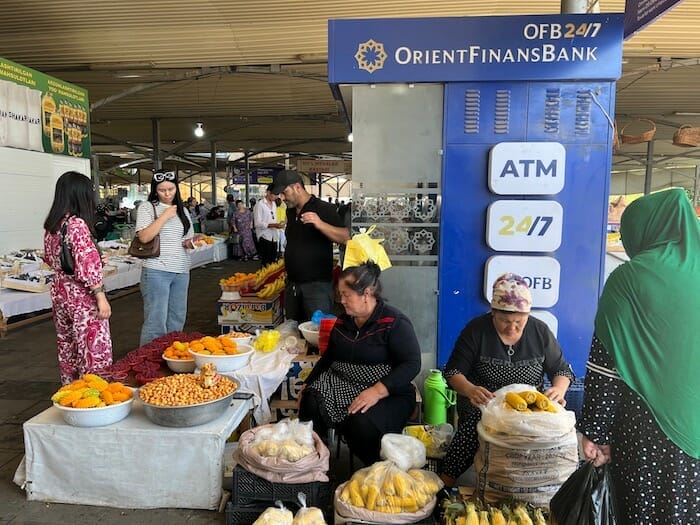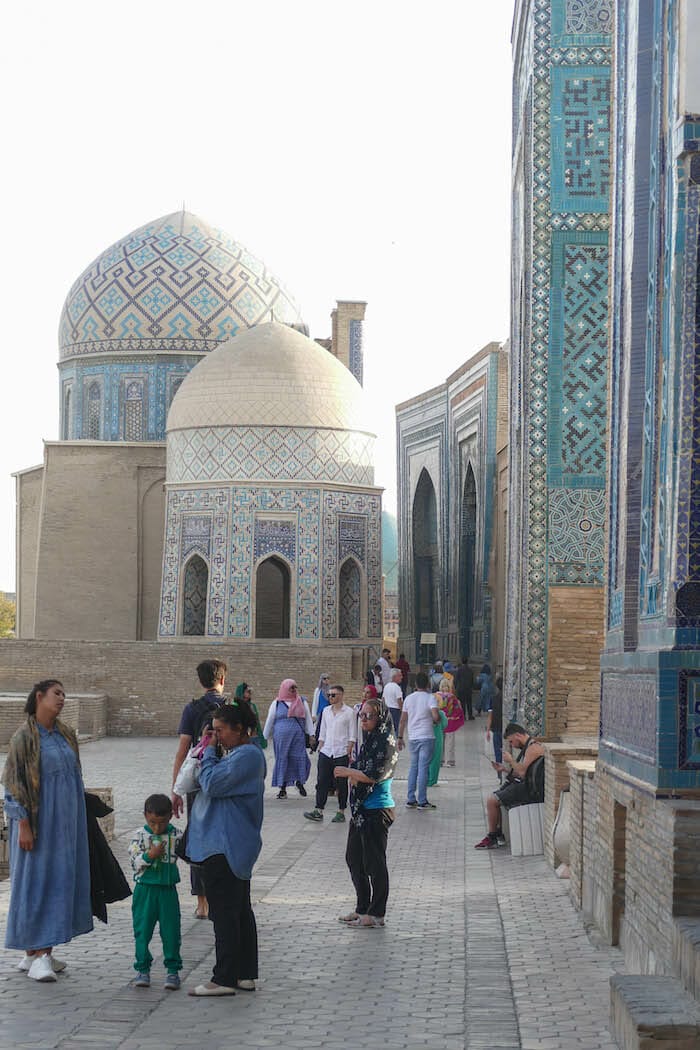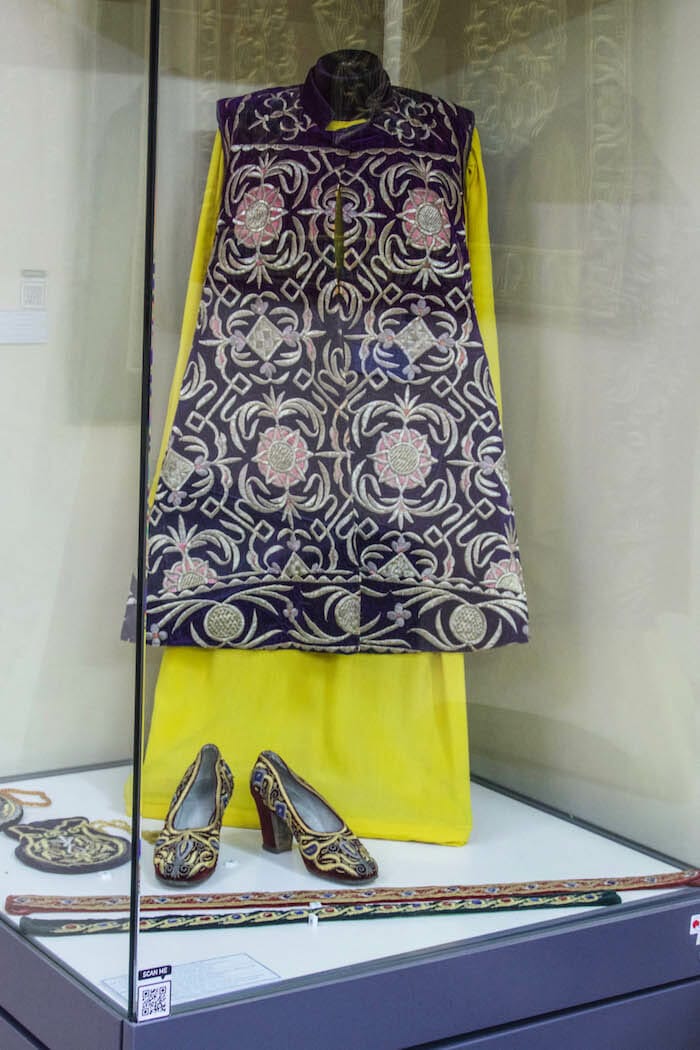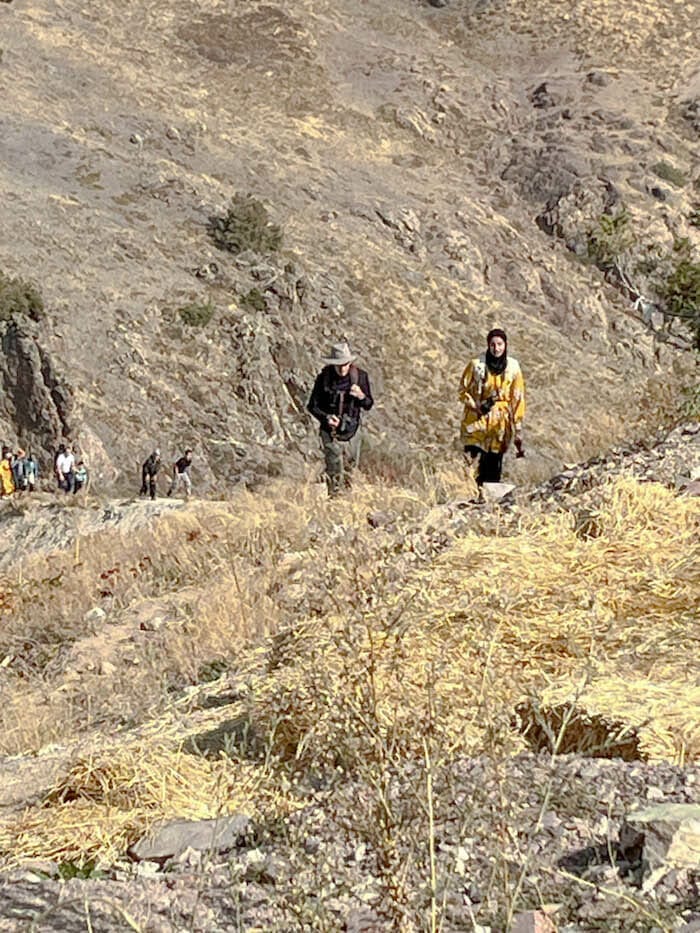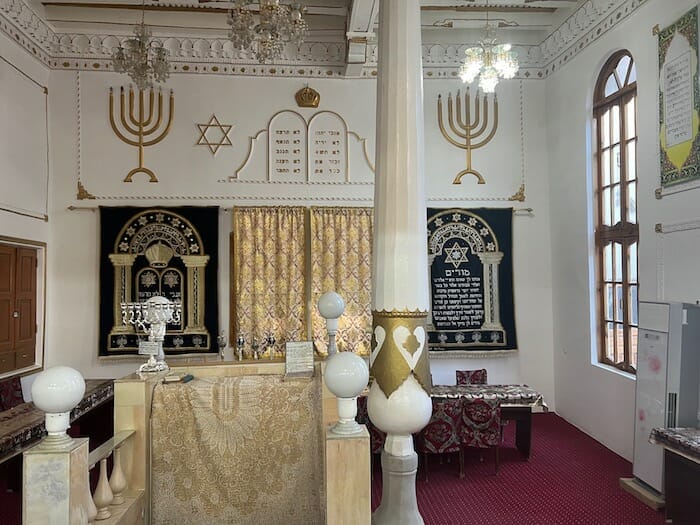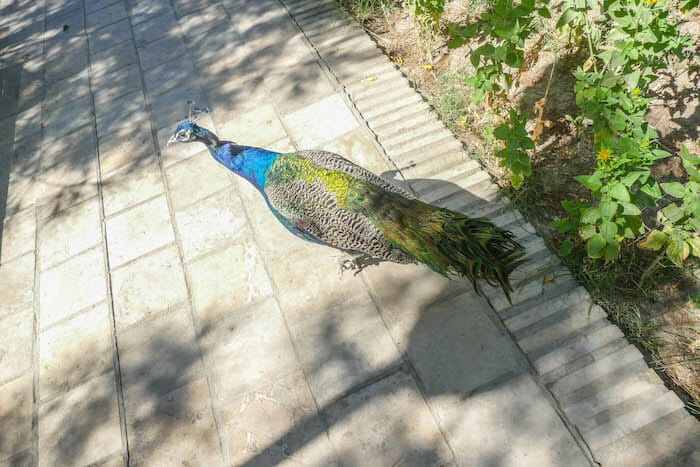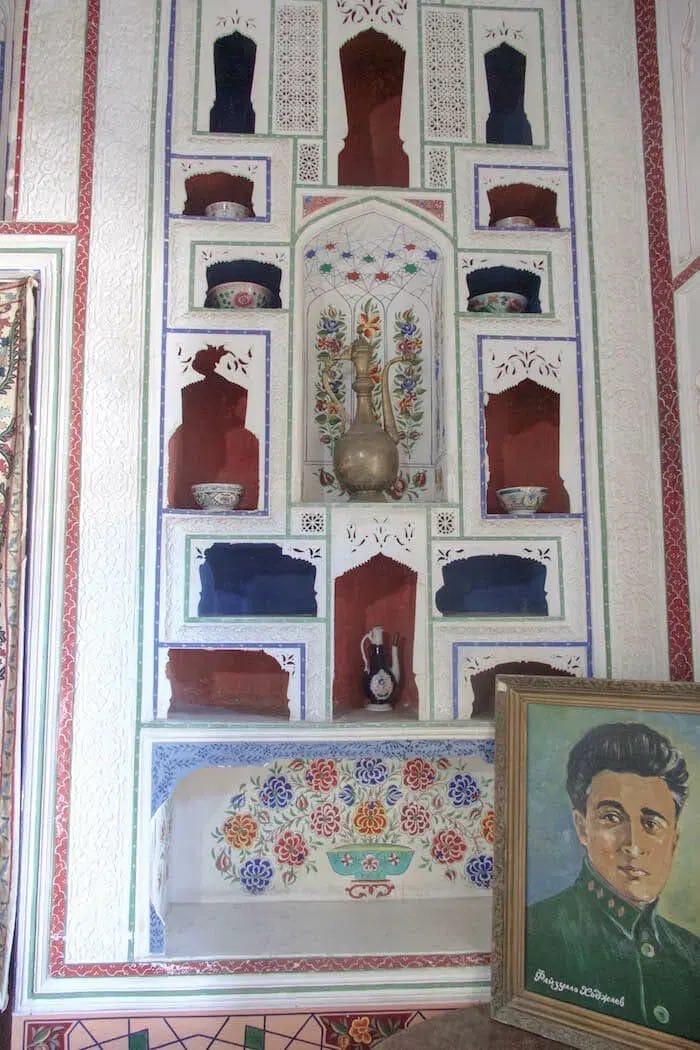Read the companion Picture this Post review-- UZBEKISTAN TOUR – Tips for American Travelers
Read the related stories by clicking a picture in this roundup.
Uzbekistan in Autumn
It’s another late September day in Tashkent with zero chance of rain predicted. You too might find yourself stopping in your tracks to look up and around to admire the perfection of the day. There’s zero humidity. It’s sunny, but in no way threatening with sunstroke as more desert surrounds might do.
Like this photographer/writer team, you may have been catapulted here by following a silk thread in an intricate psychedelic ikat design you had once seen in a museum. Or perhaps you too wonder at what it was like for the Marco Polos of yore. You do know you are walking on roads that were once crowded with camels taking merchants and their wares across the Silk Road. That’s more theoretical in Tashkent perhaps than in the tourist hot spots of Samarkand, Bukhara or Khiva where preservation of yesterdays seems more top-of-mind.
Modernity Mixes with Pre-Medieval
In Tashkent, your vista will likely include building cranes and more apartment buildings than historic mosques. Some are soviet era relics. New construction seems to be disrupting sidewalks in all directions, even in historic Bukhara and Samarkand where quickly constructed hotels and young families seem to spawn like Topsy, perhaps since Uzbekistan’s declaration of independence in 1991. Later on you realize that these uneven and often rubble strewn walkways off the well-worn tourist paths might explain why you can’t quite recall seeing a wheelchair-bound disabled person anywhere in the country.
Russians Aplenty
Russian signs are still everywhere, as are Russians themselves. How astounding to ponder our guidebook’s account that the first Russians came here as slaves, and to know that now many of the newer Russian arrivals are trying to avoid Ukraine War conscription. More practically speaking, it means that you run into far less English-as-a-Second-Language literacy. Frustrated owners of Uzbek-style bodegas might raise their voice in Russian when you don’t grasp their explanations of prices, much as monolingual Americans might ramp up their volume for newly arrived foreigners.
English-as-a-distant-third-language is the reason for keeping your Google Translator app open and ready. This is one of many tips to help you navigate Uzbek terrain.
Are Americans Coming to Uzbekistan?
It surprises to learn from hoteliers that American tourists are not so rare. Doing the ten-hour trip from a Paris base to Uzbekistan seems a lot more doable than the day+ journey from the States. We don’t see the signs of the student backpacker scene of Europe. Latin America, etc. We don’t hear too many American accents. When we tell Uzbeks we are from America their eyes seem to shine brighter and their smiles get wider.
#1 Attraction—the Warm Uzbeks
Then again, it’s quite difficult for us – at least in our limited less that a fortnight Uzbekistan tour-- to imagine Uzbeks being anything but helpful to anyone. When we asked for directions to a famous Plov center, we instead got a tip and warm invitation to follow to a much better restaurant favored by locals. Cyrillic alphabet challenged, we go to the wrong airport and meet a security guard who insists on paying for our taxi to the other airport with her Yandex (i.e. equivalent of Uber) account. While we are admiring the architecture of one of Tashkent’s lush metro stations, an elderly gentleman in a threadbare suit approaches to regale us with accounts of Uzbek history reflected in the architecture. You too might also notice and remark at the gentle parenting style seemingly everywhere.
The usual travel annoyances are few. Other than rapacious taxi drivers swarming in a mafia-like army to coerce you upon airport arrival, bargaining is more soft-sell than not. Arms will be outstretched for tips here or there when you don’t expect them, but you will never feel menaced by an aggressive begging scene as elsewhere in the world.
Crafts, Mosques, History
Lovers of crafts will find much to admire in Uzbekistan’s tourist spots, though it is often in museum cases where the superlative collections are found. The mosques, madrassahs and shrines of yesteryear lean slightly, as if to always remind of the earthquakes they have endured, and their rebuilding following an earlier rebuilding.
Those not steeped previously in Central Asian history and culture--like this writer-photographer team--may also be awed by immersing in Ulug Beg’s mathematical prowess. We are reminded that several moon mountains and valleys are named for Uzbek’s many early pioneers of astronomy.




